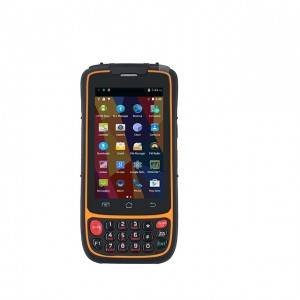The Toughbook FZ-L1, on the other hand, is a sturdy and durable Android tablet that is closer to what its moniker represents. It has been designed to meet the MIL-STD-810G standard, just like its smaller brother, it can survive drops up to 5 feet, and is IP67 dust and water-resistant.
Read More: Ulefone Armor 3 series with 10300 mAh battery passes the violent test with flying colors (video)
Butterfly Network, a startup co-founded by an MIT alumnus, aims to make ultrasound imaging as simple and ubiquitous as blood-pressure or temperature checks — in hospitals and, eventually, in consumers’ homes.
● Holographic displays are interactive 3D projections that can be shared with customers, collaborators, and friends. The Looking Glass device offers holographic displays of everything from imaginary creatures to architecture plans.

We formed the view that the camera technology just needs an enhanced photo app to make better automatic picture choices than it does currently, reducing the reliance on manual tinkering to get the best results.
Moving into a digital network world The end of the Cold War six years ago signaled the end of defense as a driver of technology creation. Engineers have since sought ways to apply defense designs to commercial services. “There’s a lot of novelty going on around wireless base stations,” said Dr. Oliver Hilsenrath, former vice president of technology for Geotek Communications Inc. “We’ve seen a lot of innovations in the last 10 years, but radio is really as antiquated as it was 30 to 50 years ago,” Hilsenrath said. As the Cold War ended, Hilsenrath was chief engineer of the communications division of Rafael, the military research arm of Israel. Rafael also is a Geotek partner. Hilsenrath entered the ground floor of Geotek in New Jersey after leaving Rafael in the early 1990s. At the time, Geotek was small and challenged with building abstract concepts into a commercial business. Now that Geotek has evolved from a developing company to a system operator with hundreds of employees, Hilsenrath has moved on again, back to the development end of things. He has created a private technology company, U.S. Wireless Corp. in San Ramon, Calif. The company is designing products that take advantage of core technologies developed by the defense industry. U.S. Wireless’ first product is the FlyBeam, an infrastructure device that interfaces with existing base station hardware. The company says the FlyBeam adds functionality to cellular base stations and increases capacity beyond current saturation levels. “Electromagnetic energy is analog, but we manage it digitally. [The FlyBeam] is a digital front-end to an analog world,” Hilsenrath said. … Read more
So, yeah, performance will be an issue for some people, but they’re not this product’s target audience, so that’s okay. The product might fail — it’s a tough monopoly to break — but I for one am glad they’re trying something new.
Still use my T/X every day. best PDA ever. Paid about $400 for it around 2006. like to see your smart phone still work after 12 years.

Roland Lazina, head of process and system management at Hermes Germany, said, “In order to keep up with the growing challenges in trade and logistics, the last mile has to become even more flexible and, above all, more digital. Our new hand-held scanners are the perfect basis for this: they are fast, easy to use and new features can be added with little effort at any time.”
A handheld diagnostic device has long been the dream of doctors and patients alike. And it’s getting closer.
I have a box as well, as a friend used to writer programs for Palm PDAs and gave me a bunch of old ones.
Its not expensive for what it is based on what the free market is showing it will pay, and far from expensive in teh phone category as a whole. You should amend that to “its expensive for a mediatek based device”. Niche devices that aren’t mass produced tend to be more expensive to make for smaller startups and companies. Might not be for you. Gotta pay to play.
Rugged PC Review.com | Handheld Pda Related Video:
, , ,
